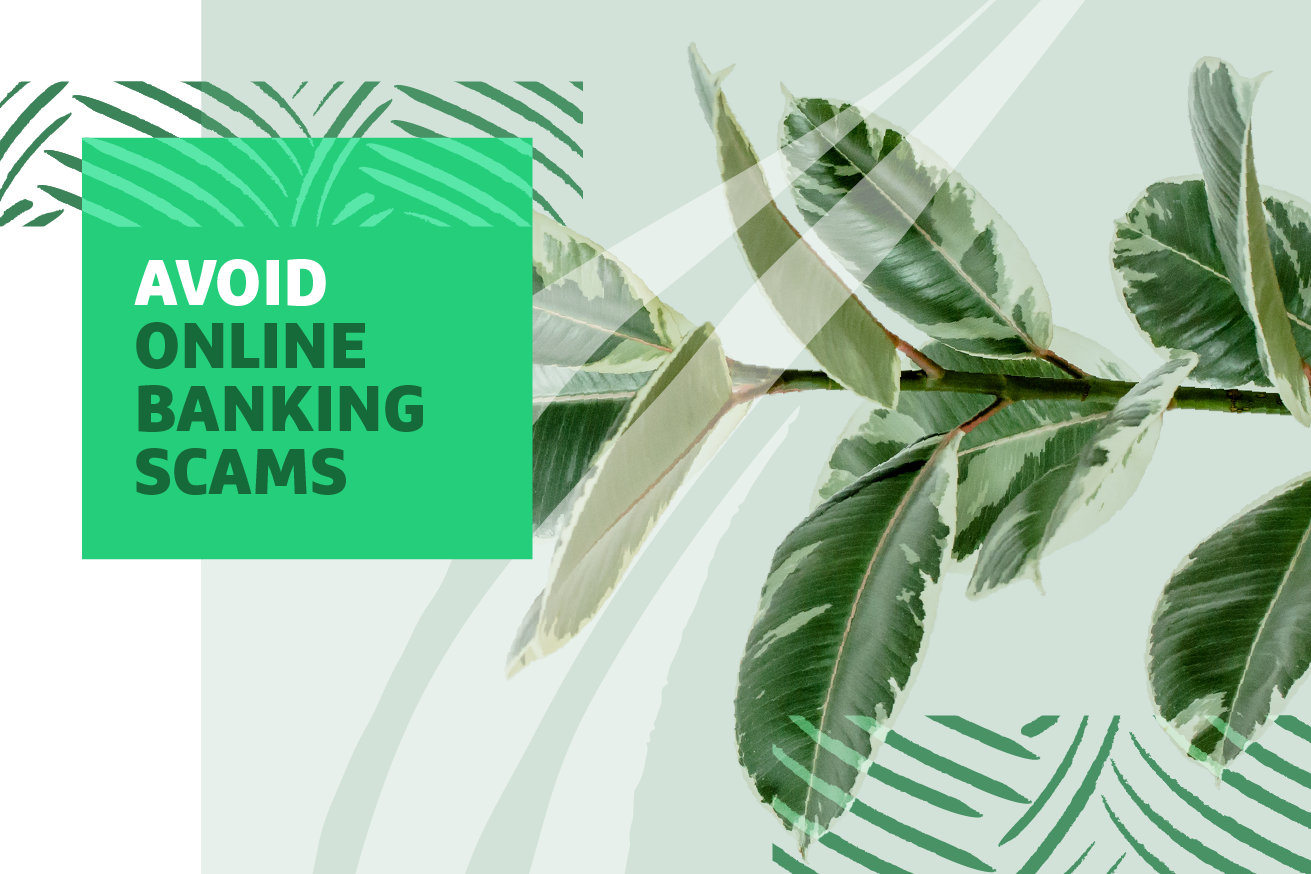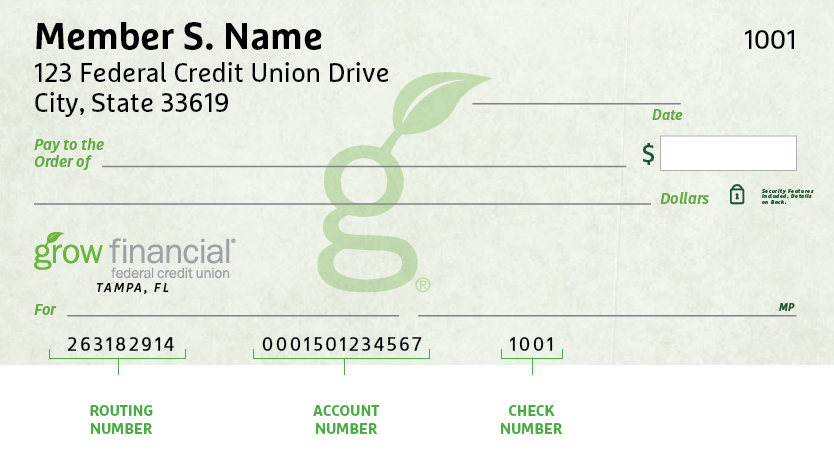- Personal
- Membership
- Membership
- Rates & Fees
- Checking
- Checking
- Personal Loans
- Personal Loans
- Wealth Management
- Investment Services
- Financial Advisors
- Resource Center
- Business

May 13, 2021
Watch Out for These Digital Scams: Phishing Scams and P2P Fraud
We’re 100% sure that if you’re reading this, you use the internet. That means you’re a potential target for some of the many prevalent online scams affecting consumers in the digital age. As your financial institution, we want to do everything we can to keep you, your money and your personal information safe from fraud. Watch out for these two increasingly common methods scammers can use to target you: phishing scams via email and text messages and exploitation of peer-to-peer (P2P) payment apps, such as Venmo, Cash App and Zelle®.
Phishing scams: Don’t get hooked.
As far as electronic fraud goes, phishing is one of the most successful plays in the scammer playbook. According to the FBI’s IC3, phishing fraud was one of the most common forms of fraud in 2020, with more than 241,342 individual victims.1
Phishing is an online scam that targets your personal information. Scammers send fake emails or text messages impersonating a real entity — like your bank, utility service provider or insurance company — designed to get you to click on malicious links. Once you’ve clicked, they might gather your personal information, download viruses or other malware onto your computer, or get you to complete a fraudulent transaction. The Anti-Phishing Working Group, Inc. (APWG) reported that phishing attacks against financial institutions were among the most prevalent scams in 2020.2 You’re probably wondering: How can I avoid phishing scams?
Keep yourself safer online with these tips:
- Only open emails or text messages from trusted senders.
- Always hover over links before clicking so you can see a preview of the real destination. Don’t click if it seems suspect.
- Never input personal information, such as bank account details, Social Security numbers or passwords, onto websites, except those you trust to be secure.
- If an offer seems too good to be true, it probably is. Be wary.
- When in doubt, call the company directly to verify the authenticity of any email, rather than clicking potentially risky links.
P2P Payments: Watch out for this new type of fraud.
Popular P2P apps, like Venmo, Cash App, PayPal and Zelle®, are convenient targets for scammers. Not only are P2P scams simple to execute, they’re also new to the marketplace, so customers aren’t as aware of them. These quick-service payment apps are rife with opportunity for fraud, and they don’t usually have the zero liability guarantees that consumers expect from their credit cards and their financial institutions. Usually, once your money is gone from these apps, it’s gone for good.
Avoid these new P2P scams:
Mystery money
With this scam, a stranger “accidentally” sends you money, then asks you to send them the money back. The problem is: the scammer added the money to their account using a stolen credit card or bank account, so Venmo (or whichever P2P you used) will flag the transaction as fraud eventually. Then, Venmo will take those funds out of your account, or, if you’ve already sent the money back to the sender, hold you responsible for that amount (and potentially block your account too).Hidden credit card fraud
Let’s say you’ve listed an item for sale on Facebook Marketplace or Craigslist. The scammer would pay you money using Venmo (or another P2P service), pick up the item, then hit the road never to be heard from again. Once Venmo catches on that the funds were fraudulent, they can flag the transaction and take the money from your Venmo balance or hold you responsible to pay it back. Then you’ve got no money and no item. No fun.Four ways to be careful when using P2P apps:
- Only send or receive money from people you know personally.
- Always confirm that you’re transacting with the correct person by verifying the phone number, because anyone could impersonate someone you know by simply changing their name and photo.
- Be cautious about using these apps to receive payment for goods or services.
- Call the P2P company’s customer service directly to resolve erroneous transactions, rather than sending money back to strangers.
Since they lack comprehensive fraud protection, we do not recommend using P2P apps for transactions with strangers. When in doubt, credit cards (or cash, if accepting payment in person) are safer payment methods.
Want to learn more about avoiding other types of scams? Visit our Education page and sort by Security Education to read more.
1Internet Crime Report: 2020. Accessed April 26, 2021. https://www.ic3.gov/Media/PDF/AnnualReport/2020_IC3Report.pdf
2CAPWG Fourth Quarter 2020 Phishing Report. Accessed April 26, 2021. https://docs.apwg.org/reports/apwg_trends_report_q4_2020.pdf
Posted In:
How to Find Your Routing & Account Numbers
When you make a payment online, by phone or on a mobile device, you may be asked for our routing number and your checking account number. Credit unions and banks use these numbers to identify accounts and make sure money gets where it’s supposed to be. You’ll also need to provide your routing and checking account numbers for:
- Direct deposits
- Electronic checks
- Military allotments
- Wire transfers
Where to Find Your Routing & Checking Account Numbers
Your personal checks include both our routing number and your account number, as shown on the Grow check example below.

Don’t have a Grow check? No worries.
Visit any Grow store and ask for a Direct Deposit Form. It lists both your routing number and checking account number.
Making a Loan Payment
Incorrect Phone Number Alert
We’ve identified an incorrect phone number listed in a letter sent to a select group of new members with auto loans. The incorrect number is NOT affiliated with Grow. Please be sure to use our official phone number, 800.839.6328, which you can verify on our Contact Information page. For your security, keep your personal information safe and avoid sharing it over the phone, email or text message. We will never ask you for your credit or debit card security code, expiration date or PIN, login security codes, or your online banking password.
When it comes to making payments, we try to make it as painless as possible to pay your loan every month. We have several different ways to pay, including convenient online options.
Pay Online
You have two ways to pay online by transferring funds from another bank or credit union.
- Grow Online Banking (Preferred payment method for any loan)
This is the simplest way to pay your loan. You can make one-time payments or set up automatic recurring payments in Grow Online Banking. Once you log in, select “Transfer/Payments” from the menu. If you’re not enrolled in Grow Online Banking yet, you can set up your account in just a few minutes.
Log In
- Debit Card or ACH (Available for auto, personal loans and HELOCs)
Note: ACH and debit card payments are not available for credit cards or most mortgages, except HELOCs.
We accept ACH payments with no additional fees, consumer Mastercard® and Visa® debit cards with a convenience fee of $4.95, or commercial Mastercard® and Visa® debit cards with a convenience fee of 2.95% of the payment amount. To get started with an online ACH or debit card payment, select Pay Now below.
Pay Now
Pay by Mail
You can also pay any Grow loan by check through the mail. Please remember to include your account number and Grow loan number on the check. (For credit card payments, please do not write your 16-digit credit card number on the check, which can cause a delay in processing the payment.)
Address for auto, credit card, personal loan and HELOC payments:
Grow Financial Federal Credit Union
P.O. Box 75466
Chicago, IL 60675-5466Address for personal first or second mortgages and home equity payments:
Grow Financial Federal Credit Union
P.O. Box 11733
Newark, NJ 07101-4733You Are About To Leave GrowFinancial.org
At certain places on this site, there are links to other websites. Grow Financial Federal Credit Union does not endorse, approve, represent, certify or control those external sites. The credit union does not guarantee the accuracy, completeness, efficacy, timeliness or accurate sequencing of the information contained on them. You will not be represented by Grow Financial Federal Credit Union if you enter into a transaction. Privacy and security policies may differ from those practiced by the credit union. Click CONTINUE if you wish to proceed.
